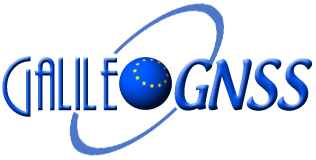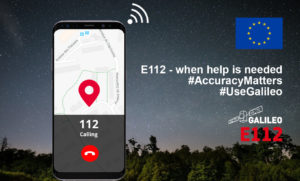A recently published Commission Delegated Regulation sets out measures to introduce Global Navigation Satellite System (GNSS) capability, particularly Galileo capability, in smartphones placed on the European Union market from 17 March 2022, so that they can support the transfer of caller location information from GNSS (at least Galileo) in the event of 112 emergency calls (E112).
A large majority of phone calls to the 112 emergency number are placed from mobile phones. These calls already support the sending of location information to emergency services. However, this information is not based on GNSS.
E112 makes use of Galileo to establish location for emergency calls to the 112 emergency number. Mandating the use of Galileo in smartphones will improve the accuracy of the caller location, which will allow emergency responders to get to the scene of an accident faster. The Regulation will apply in all EU Member States from 17 March 2022.
Galileo GNSS to provide enhanced positioning for E112
There is already a solution in place that uses GNSS technology in emergency calls made from smartphones. Advanced Mobile Location, or AML, transmits the GNSS, Wi-Fi or cell-ID information available on the caller’s smartphone via a message to a dedicated end-point, usually a Public Safety Answering Point (PSAP), which makes the caller location available to emergency responders in real time.
AML has been deployed in several EU Member States thanks to the EU-funded Help 112 project, which was set up to evaluate the merits of handset-based technologies in improving the location of emergency callers, and which is now in its second phase.
The E112 concept is similar to the eCall system, mandated for use in all new car and light van models that receive type-approval in the EU from 31 March 2018, which automatically dials the 112 emergency number in the event of a serious accident and sends the position information of the car.
“The ability to precisely locate the site of an emergency enables first responders to arrive on the scene faster which, in turn, results in more lives saved. Galileo is already supporting a faster emergency response in the eCall system and now, with the new Regulation, all Europeans making an 112 emergency call from a smartphone will be able to benefit from the same precision,” said GSA Executive Director Carlo des Dorides.
Galileo GNSS higher accuracy for E112
Location information is currently established through identification technology based on the coverage area of the cellular network tower (cell-ID). The average accuracy of this information varies from 2 km to 10 km, which can lead to significant search errors following emergency calls, resulting is time wasted and lives lost. In contrast, location information based on GNSS provides an average accuracy between 6 and 28 meters. This level of accuracy will have a major impact in terms of emergency response times.

